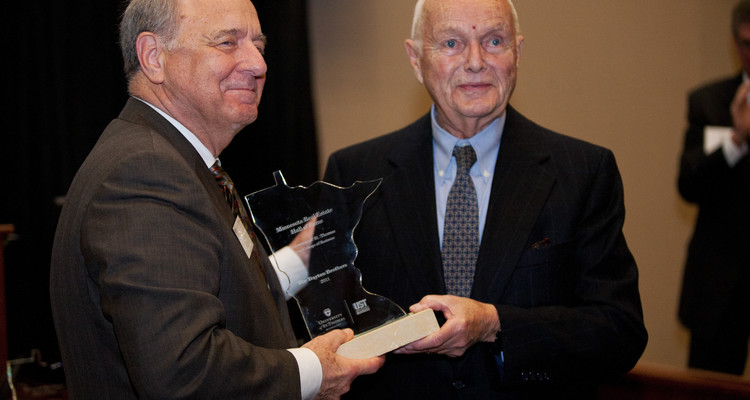Retail and real estate giant Bruce Dayton died Friday, November 13, at the age of 97. In 2011, Dayton and his brothers were honored for their contributions to retail real estate, both locally and nationally, when they were inducted into The Minnesota Real Estate Hall of Fame at The Shenehon Center for Real Estate at the University of St. Thomas’ Opus College of Business.
In 1950, the Dayton brothers – Donald, Bruce, Wallace, Kenneth and Douglas – inherited The Dayton Company from their father, George Draper Dayton. In the late 1950s, the brothers played a critical role in the creation of Southdale Center, the world’s first fully enclosed shopping mall, located in Edina, Minnesota, when they brought Dayton's in as an anchor tenant. Southdale was a huge success and the brothers soon developed additional malls in the Twin Cities, including Brookdale in 1962, Rosedale in 1969 and Ridgedale in 1974.
In the 1960s, they launched a new endeavor: Target. They developed the property surrounding their first Target store in Roseville, a practice that is still in place today; Target store locations are company owned and the land near them is developed by the company.
In the 1970s, the Daytons helped create Nicollet Mall in downtown Minneapolis and were influential in getting the IDS Center opened by agreeing to house the Dayton-Hudson Corporate headquarters in the building. That decision ultimately resulted in the skyway system, as the first four skyways were constructed between the IDS Center and Dayton's on Nicollet Mall to allow easy movement between the two buildings.
In addition to his successes in retail and real estate, Dayton was well known for his major contributions to the Minneapolis Institute of Art, where he was a trustee for 73 years and provided more than $80 million in capital support. He is survived by his wife, Ruth Stricker Dayton, his four children, 11 grandchildren and two great grandchildren.







